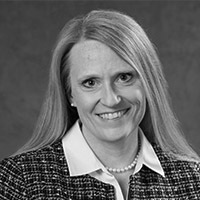Question
How can we foster engagement with senior clients?
Answer
- Set up daily activities that:
- Stimulate the mind and body
- Are culturally and socially relevant
- Match interests
- Are age-appropriate
When looking at activities, we want to make sure they foster engagement. Our clients in senior living are isolated. They are often in their room for long periods of time and may not have family coming to visit. When they come for OT services, are we stimulating their mind and body with culturally, socially relevant, and age-appropriate activities? Do they match their interests and what they want to do?
I will ask, "Hey, what do you want to work on today? What's your goal, and how do you want to accomplish that?"
- Connect individuals to their environment
- Make it more than just a place to sleep and eat
- Include residents in decisions and events within the environment
- Creating and modeling purpose
I like the idea of connecting our seniors to their environment. It is more than a place to go to get their meals, sleep, and shower. Are there ways that we can include our clients and not just during the occupational therapy process? For example, is there a way that this person can be part of a "welcome wagon," for new individuals?
I have done some creative things in both assisted and independent living communities. We had a car safety day, and one of the residents was a mechanic. We involved him in the planning, and it gave him a sense of purpose. Someone else may have worked in healthcare and could help with policies and procedures or marketing.
We can model purpose by having residents reach out to other residents.
- Involvement in the local community
- Tutoring, teaching, intergenerational mentoring
- Promotes feelings of self-worth
There is a huge opportunity to work with the local community. For example, seniors can teach younger children how to cook, teach them how to read, or how to sew buttons on a shirt. There is also a great opportunity for our kids to teach our seniors things, like social networking online, how to set up a Zoom call, or how to access Facebook. We can match individuals with common interests and get them involved. It promotes a feeling of self-worth.
- Help individuals to lead
- Leadership opportunities in the facility
- Resident committees
- Fosters a sense of purpose
I also love the idea of helping individuals to lead and incorporating this into our OT plans of care. A committee may be a great place to start related to interior design, groundskeeping, or dining. These tasks require higher level cognitive skills and give them the opportunity to feel purposeful as they are serving a greater cause.
